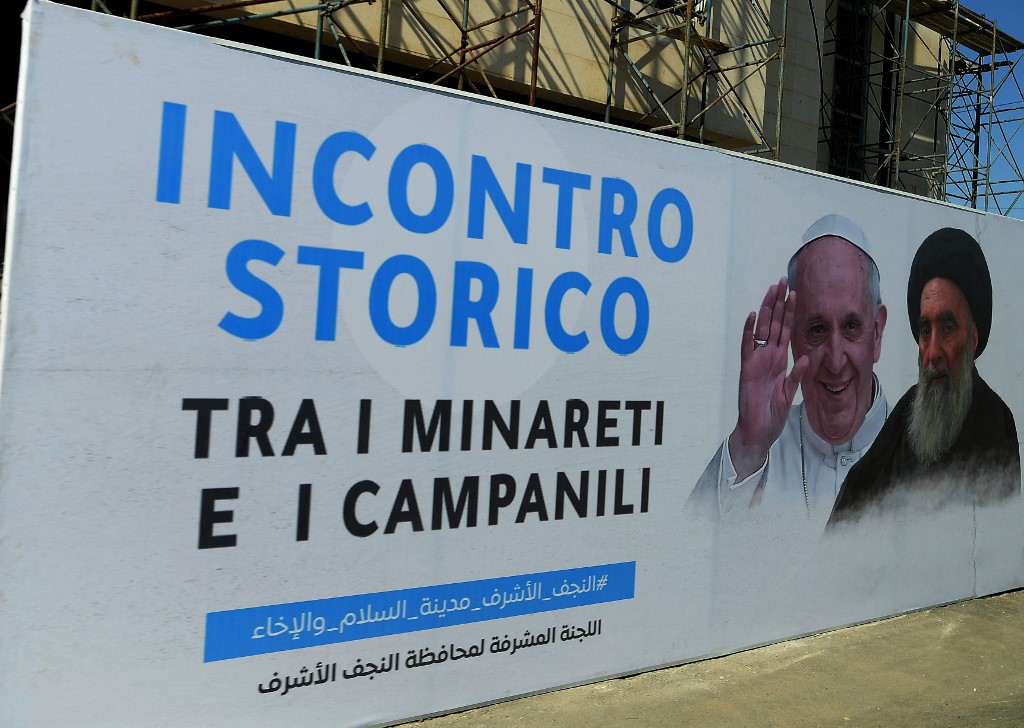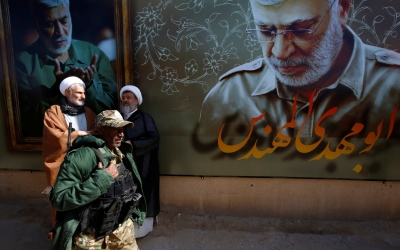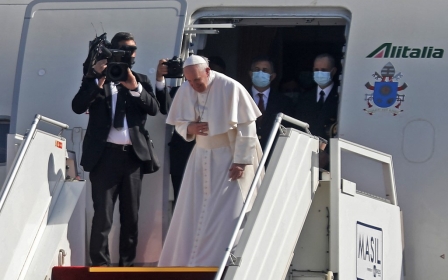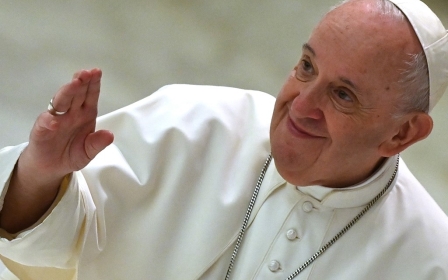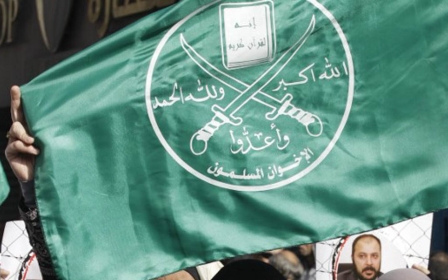Iraq: Can Pope Francis's visit bring hope to religious minorities?
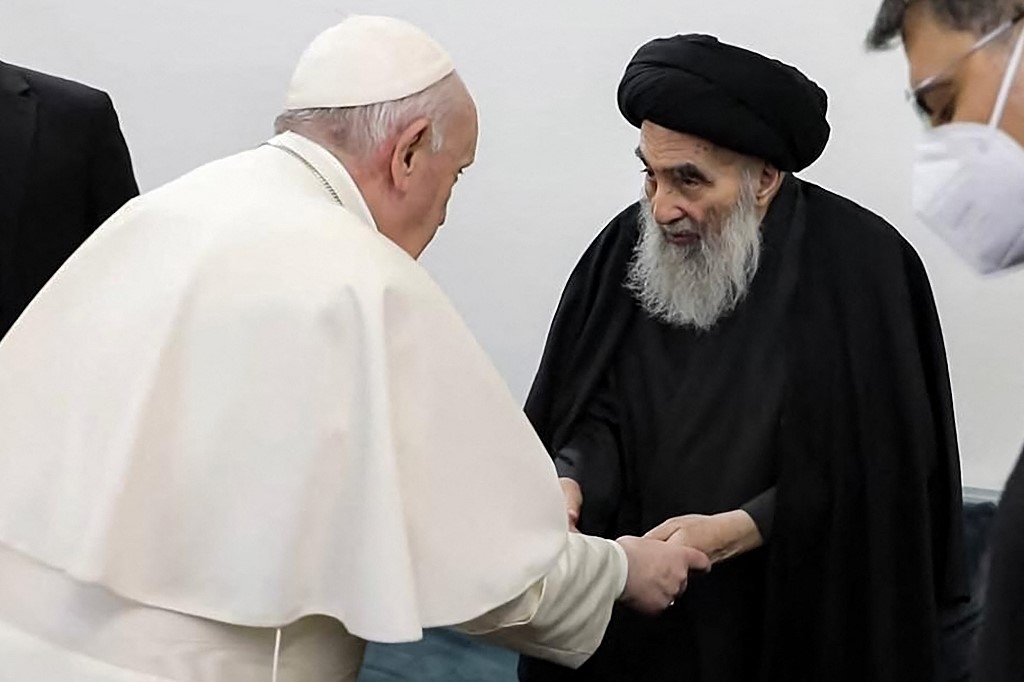
Over the weekend, Pope Francis met Grand Ayatollah Ali al-Sistani at his home in Najaf, Iraq - a meeting between the spiritual heads of the Catholic and Shia worlds.
While this meeting marked a milestone in the history of interfaith dialogue, it also has implications for the intra-Shia power dynamics between the clerical establishment of Sistani based in Iraq, and that of Qom, in the Islamic Republic of Iran.
The Pope’s visit with Sistani is also an implicit acknowledgement of the structural failure of the Iraqi state to protect minorities. Hopefully, the meeting will encourage the governments in Baghdad and Erbil to address these issues.
It gives Iraq's Christians and minorities hope that the words of the Pope and the Grand Ayatollah will resonate among policymakers
While diplomacy is considered the hallmark of interactions between nation-states, this weekend also witnessed the leaders of two global faith networks projecting a form of soft power, with implications for the foreign and domestic policies of both Iran and Iraq.
While the Vatican is the undisputed centre of global Catholicism, the seminaries of Najaf and Qom compete for the loyalties of the world’s Shia. By visiting Sistani, Pope Francis implicitly acknowledged Najaf in this rivalry.
New MEE newsletter: Jerusalem Dispatch
Sign up to get the latest insights and analysis on Israel-Palestine, alongside Turkey Unpacked and other MEE newsletters
Sistani rarely grants meetings with foreign leaders or diplomats, and when he does, it bestows significant prestige and legitimacy on the visitor. In March 2019, Iranian President Hassan Rouhani secured a meeting with Sistani in Najaf, after the cleric had rejected visits from Rouhani’s predecessor, Mahmoud Ahmadinejad, and the now-deceased commander of Iran’s Islamic Revolutionary Guard Corps Quds Force, Qassem Soleimani.
Rouhani’s meeting with Sistani gave the Iranian president tacit support from the respected cleric, at a time when his moderate foreign policy had been attacked by Iranian hardliner politicians and the Revolutionary Guards. Afterwards, Sistani issued a veiled statement that Iraq’s sovereignty should be respected - an indirect message to Iranian Supreme Leader Ayatollah Ali Khamenei.
Theological challenge
Originally from Iran, Sistani is a revered figure not only among the Shia of Iraq, but also among Iran’s Shia population. This is manifested in a report showing that 49,000 students at 300 seminaries in Iran received stipends from Sistani’s establishment in 2013. Throughout Iran, there were reportedly 110,000 seminary students in 2018.
Consequently, Sistani’s seminary emerges as a powerful non-state actor that not only conducts diplomacy on Iraq’s behalf, asking Iran and the US to respect its sovereignty, but also serves as a theological challenge to the Islamic Republic’s legitimacy, in addition to a counterweight to Iran’s influence among Iraq’s Shia.
There were no members of the media present during the meeting in Najaf between Pope Francis and Sistani, but in an ensuing statement, the Grand Ayatollah “affirmed his interest in Christian citizens living like all Iraqis in peace and security while preserving all their constitutional rights”.
The fact that religious figures such as the Pope and Sistani have to advocate on behalf of Iraq’s religious minorities is tied to the dwindling demographics of these vulnerable communities, as well as the lack of strong political parties to lobby on their behalf.
Roadmap to peace
What would it really take for Iraqi Christians and other minorities to live in “peace and security”? Firstly, such an agenda would advocate that the Iraqi government earmark funds for reparations after the Islamic State’s genocidal campaign. After all, it was the Iraqi military’s failure to secure the borders in 2014 that enabled the rise of the militant group.
Secondly, reconstruction must continue in areas where Iraq’s minorities originate, such as the Nineveh Plains, Sinjar and Tal Afar. Baghdad has neglected these areas, considering them peripheral to reconstruction in major urban centres such as Mosul; and even there, reconstruction has been slow.
Thirdly, security guarantees must be put in place to protect these communities as they return to their historic homelands, and to undo land grabs by other communities that sought to benefit from their absence. And fourthly, mental health facilities should be provided for these displaced minorities.
Finally, both the Iraqi and Kurdish governments need to integrate courses about these minorities into the primary and secondary school curricula. Minority holidays and cultural events should be commemorated.
None of this may ever happen, given the dysfunction and bureaucratic lethargy pervading the Iraqi government. But the fact that the Pope visited, despite recent rocket attacks and the Covid-19 pandemic, is significant in and of itself. It gives Iraq’s Christians and minorities hope that the words of the Pope and the Grand Ayatollah will resonate among policymakers.
The views expressed in this article belong to the author and do not necessarily reflect the editorial policy of Middle East Eye.
Middle East Eye delivers independent and unrivalled coverage and analysis of the Middle East, North Africa and beyond. To learn more about republishing this content and the associated fees, please fill out this form. More about MEE can be found here.



